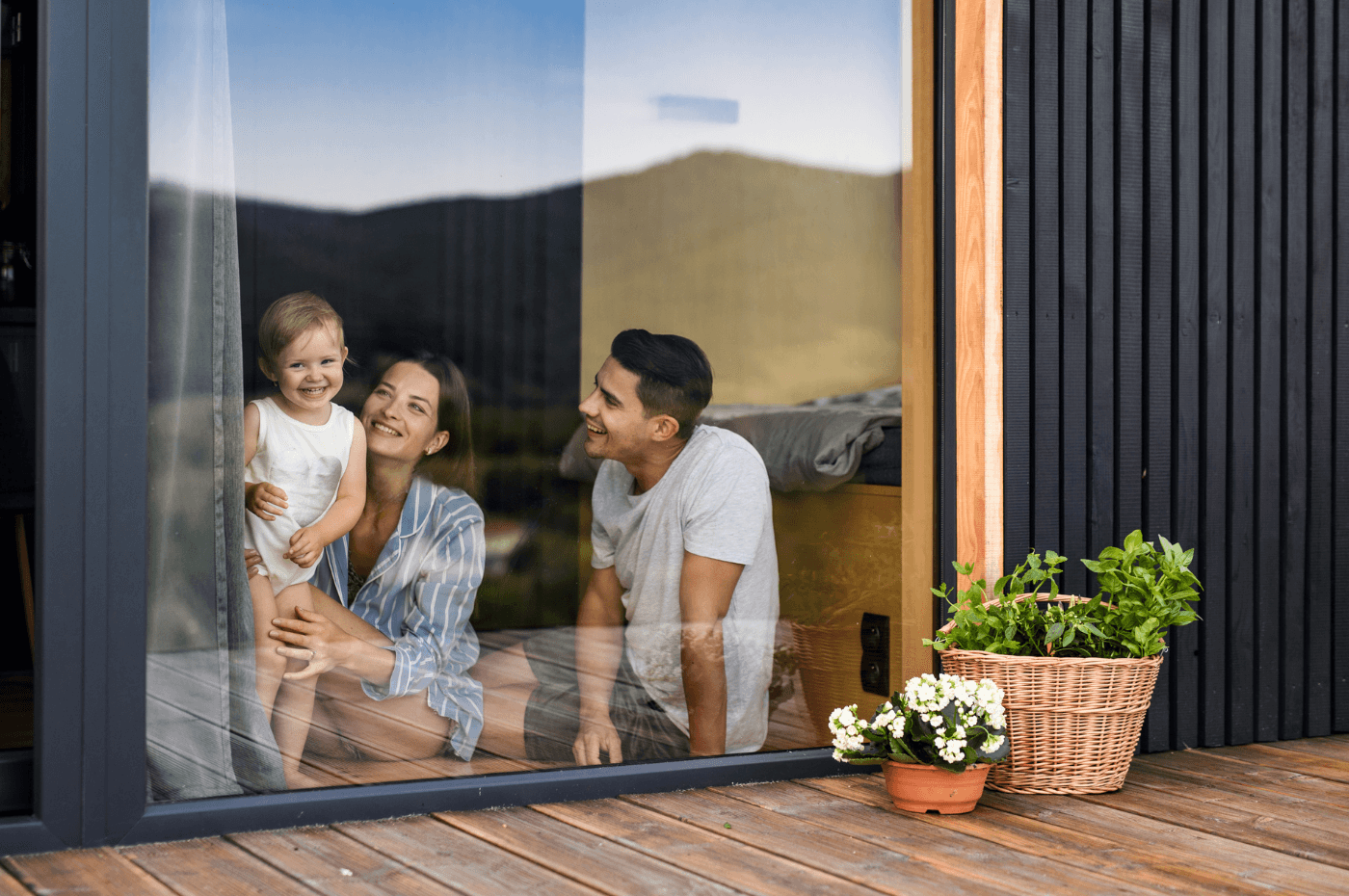Have you ever heard of a container house? While not universally appealing or suitable for all, this type of construction demands a creative approach to design to repurpose a maritime transport staple into functional living spaces.
In Quebec's architectural landscape, these unconventional homes have been gaining traction over the past few years. While still relatively uncommon, some architects and builders have embraced the challenge, resulting in a diverse range of structures; from compact tiny houses to spacious, modern residences.
You want to know more? Let's explore key aspects of container homes and showcase notable examples from Quebec.
What is a container house?
The concept of container houses is straightforward: repurpose authentic shipping containers into habitable spaces. These sturdy metal units offer versatility, allowing to craft unique structures.
With a typically industrial and contemporary aesthetic, the interior walls of the containers can be left bare or integrated into the décor, while the exterior can be left exposed, painted, or covered to alter the overall appearance of the building.
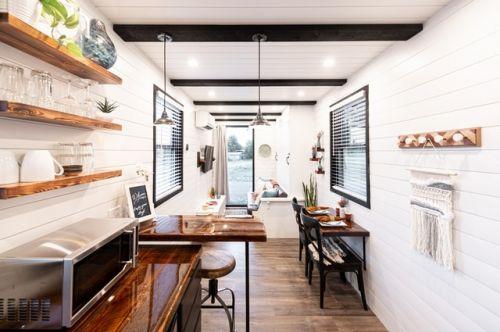
What are the advantages of container houses?
Container houses, while unconventional in construction, present intriguing advantages:
- Their adaptability is a standout feature. Utilizing containers allows for flexibility in size, height, and style, accommodating diverse preferences and needs.
- In terms of affordability, container homes can be cost-effective, contingent upon factors such as the quantity of containers required and chosen construction methods. However, it's crucial to factor in expenses like land, labour, and materials.
- These homes align with eco-conscious initiatives. Beyond repurposing containers, many projects incorporate sustainable practices like green roofs, contributing to a reduced carbon footprint.
- Navigating urban planning regulations is often smoother with container houses compared to other alternative dwellings like tiny houses or accessory dwelling units (ADUs).
What are the disadvantages of container houses?
However, just as with any buildings, container houses come with their share of drawbacks:
- The construction process, often perceived as straightforward, is more complex than commonly portrayed.
- Achieving adequate insulation poses challenges, particularly in colder climates like Quebec. Metal containers lack inherent heat retention, necessitating supplementary insulation techniques.
- While containers are recycled, incorporating additional materials may counteract their ecological appeal, potentially generating as much or more waste than traditional housing.
- Despite their robust appearance, container houses are no more resilient than wood-frame structures.
- Concerns about the containers' prior use, potentially storing hazardous materials, may arise, and determining their history can be challenging.
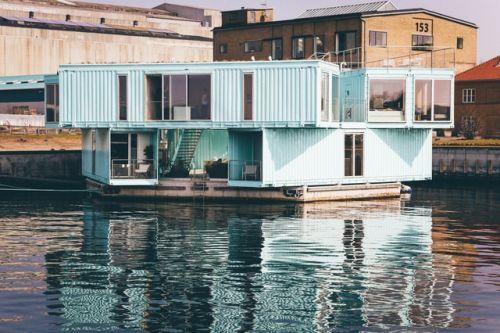
How much does it cost to build a container home in Quebec?
In contrast to the current market prices of conventional homes, constructing a residence from shipping containers generally offers a more economical option.
The overall expense of such a project hinges on several variables, including:
- Living space
- Number of rooms and stories
- Container dimensions
- Foundation type
- Utility connections (water, gas, electricity)
- Interior and exterior finishes
- Labor costs
- And more
The cost of shipping containers
The cost of acquiring shipping containers significantly influences the overall expense of building a container home. Typically, a used 20-foot container in good condition can be priced between $3,000 and $5,000 when sourced through classified ads or specialized websites.
It's important to note that these figures serve as general estimates and may vary depending on factors like container condition, location, and sellers.
Container design costs
In addition to the expenses associated with acquiring containers, you must consider the costs of outfitting and installing both the interior and exterior elements of your home. These costs fluctuate depending on the selected materials and layout preferences.
As a rough estimate, the total expenditure for a 20-foot container home is around $70,000. However, this figure serves merely as a guideline and can vary based on various factors.
Moreover, it's essential to factor in additional expenses such as land purchase, furnishings, relocation, and other miscellaneous costs.
Which cities accept container homes?
Interested in owning a container home? While the idea may spark enthusiasm, navigating the project's complexity is essential. Notably, few cities in Quebec explicitly permit this type of property within their jurisdictions.
However, select municipalities have shown openness to containers home projects on a restricted basis. Additionally, others are receptive to revising their regulations. These include:
- Beauport
- La Tuque
- Morin-Heights
- Saint-Donat
- Sainte-Adèle
- Val Saint-Côme
Before proceeding with your venture, it's crucial to check the municipal standards and regulations governing such constructions. These guidelines can vary significantly from one city to another. To gain clarity, it's advisable to directly contact your municipality.
5 Models of Container Houses in Quebec
Now that you've learned more about container homes, let's delve into exploring some available designs. Despite their limited presence in Quebec, we've uncovered a few captivating models worth exploring.
1. The Fibonacci Residence
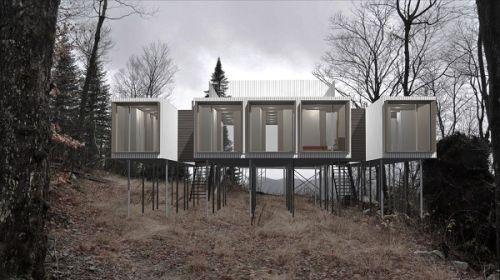
Located in: Saint-Donat
Architect: Pierre Morency Architecte
This container home ingeniously follows the Fibonacci sequence in its design. By elevating the five shipping containers on pilings, it reduces its footprint on the land. Moreover, it's entirely self-sustaining energy-wise.
The central trio of containers accommodates the communal living areas, while the two side containers houses the private quarters.
2. The Container House
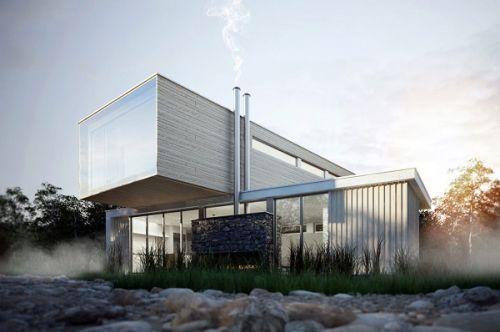
Architect: Evolution Architecture
Designer: Symbiose Design
Evolution Architecture's debut container house project showcases remarkable ingenuity, employing four containers to create a spacious living area totalling 1280 square feet. Adding to the intrigue, they ingeniously incorporated an additional container to craft a pool.
3. The Interlocking House
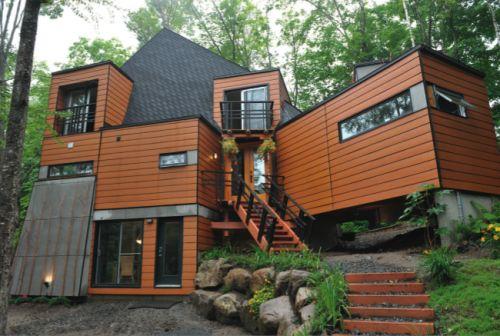
Architect: Bernard Morin
Constructed on challenging terrain, this ambitious project utilized seven interlocked 20-foot containers. What sets it apart is its unconventional design, featuring multiple distinct structures, notably highlighted by a striking large black sloped 'roof'.
4. The Container Unit
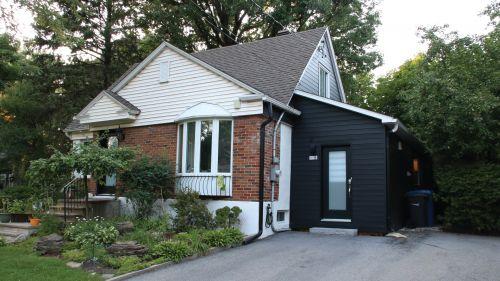
Developer: Highcube
Expanding beyond traditional container homes, Highcube has pioneered diverse designs incorporating containers. Their offerings range from modular units that seamlessly integrate with existing structures to a wide array of single-family homes, multi-generational residences, as well as shelters tailored for hunting and fishing.
Additionally, they provide solutions for commercial and industrial applications, showcasing their versatility and innovation in container-based architecture.
5. La Carapace M
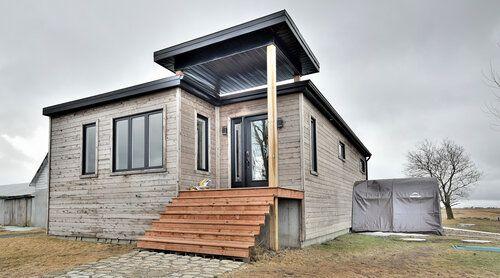
Developer: Ma Carapace
This prefabricated house, constructed using three containers, seamlessly blends contemporary and industrial elements. Its exterior features a striking combination of wood cladding, which conceals the metal framework, while also being strategically exposed in select interior spaces.
Have these container houses sparked your interest in exploring real estate opportunities? Contact a real estate broker in your area to discuss your real estate purchase or sale project. With their expertise, they can guide you through the process and help you find that special gem on the market.
Do you have a real estate projet?
XpertSource.com can help you find a real estate expert. When you tell us about your project, we put you in touch with qualified resources for free. Simply fill out our form (it only takes a few minutes) and we will connect you with professionals.

